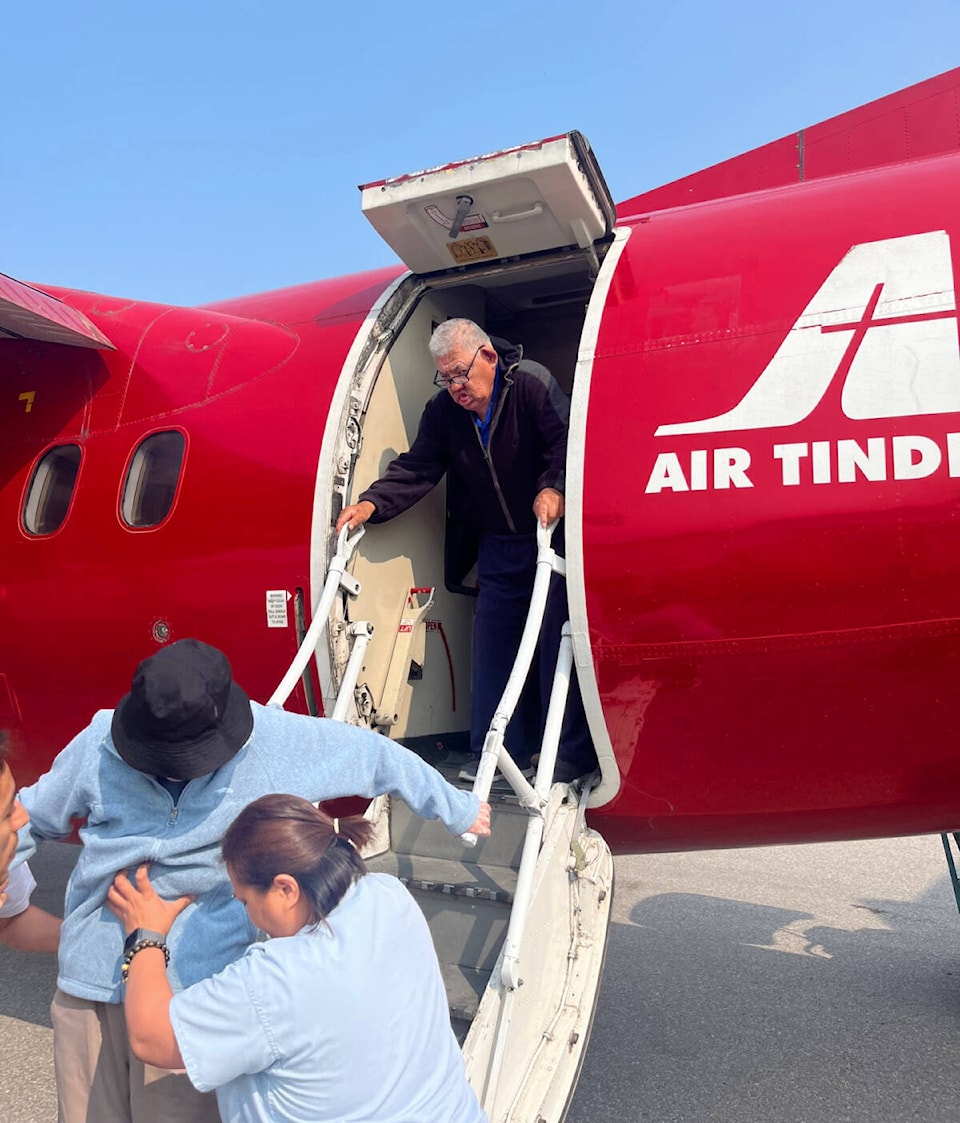A Fort Smith senior care worker has shared details about the “chaotic” few days she and fellow staff members spent evacuating their patients as an unprecedented fire season impacts the territory.
“In my 56 years of living here, I’ve never seen anything like this, ever. It’s awful,” said Margaret McKay, who works at the Northern Lights Special Care Home in Fort Smith. “It’s been a hectic few days of constant change. It’s been stressful, not only for me, but for everybody else on our team dealing with this evacuation process. We did our job the best that we could with the resources that we had available.”
For McKay, her team and about two dozen Fort Smith seniors, the ordeal began Aug. 12 when the Town of Fort Smith came under an evacuation order as a wildfire threatened the community. The seniors were then relocated to Hay River Regional Health Centre.
They wouldn’t be there for long. The next day, with a wildfire expected to reach Highway 1, an evacuation order was issued for all of Hay River.
“Evacuees should travel to Alberta at this time. Evacuation host communities will be announced later,” stated an advisory from the town at the time.
About 50 seniors from Fort Smith and Hay River, along with GNWT healthcare workers, were then flown to Yellowknife’s Stanton Territorial Hospital late Sunday afternoon. Air Tindi crews helped board the passengers, many of whom have medical conditions and mobility issues.
“We spent three hours loading the two planes,” said McKay. “One flight had 36 passengers and the one I was on was had mainly Elders in wheelchairs, so it took a little bit longer.”
“Watching these Elders during this evacuation was alarming,” she continued. “My first priority was to ensure they were boarded and fed with sandwiches and fluids for the 45-minute flight.”
Once on the tarmac at Yellowknife’s airport, the Elders waited patiently “with tired looks” to be sent to Stanton, said McKay.
“Most of the residents were still in disarray,” she said. “They’re asking what’s happening? Why are we here? And we’ve been explaining to them that there’s a fire and we had to come here for their safety.”
“We really don’t want to scare them. We just want to keep them calm and we don’t want to bombard them with what’s really happening with the fires,” she said.
On their second day in Yellowknife, the GNWT announced that it was ordering all residents to leave the city by Friday at noon. McKay said it “felt like we’re just being thrown back in the frying pan.”
“This is our third evacuation — from Fort Smith to Hay River, Hay River to Yellowknife, Yellowknife now down south,” she remarked.
On Aug. 17, staff at Stanton were preparing to send patients and care home residents to facilities in B.C. and Alberta.
“Last time I heard we’re going to be sent to Calgary,” said McKay. “It’s total chaos here at the hospital. Our seniors have already been through so many tumultuous last-minute decisions.”
According to an Aug. 16 news release from the Northwest Territories Health and Social Services Authority, services were ramping down at Stanton Territorial Hospital in response to the wildfire situation.
The small number of long-term care patients remaining at the hospital were scheduled to be sent down to southern institutions by Aug. 18.
For more information, loved ones of inpatients and long-term care residents who have been transferred to the care of Alberta health and social services can send their questions to AHS.ECC.Liaison@albertahealthservices.ca.
